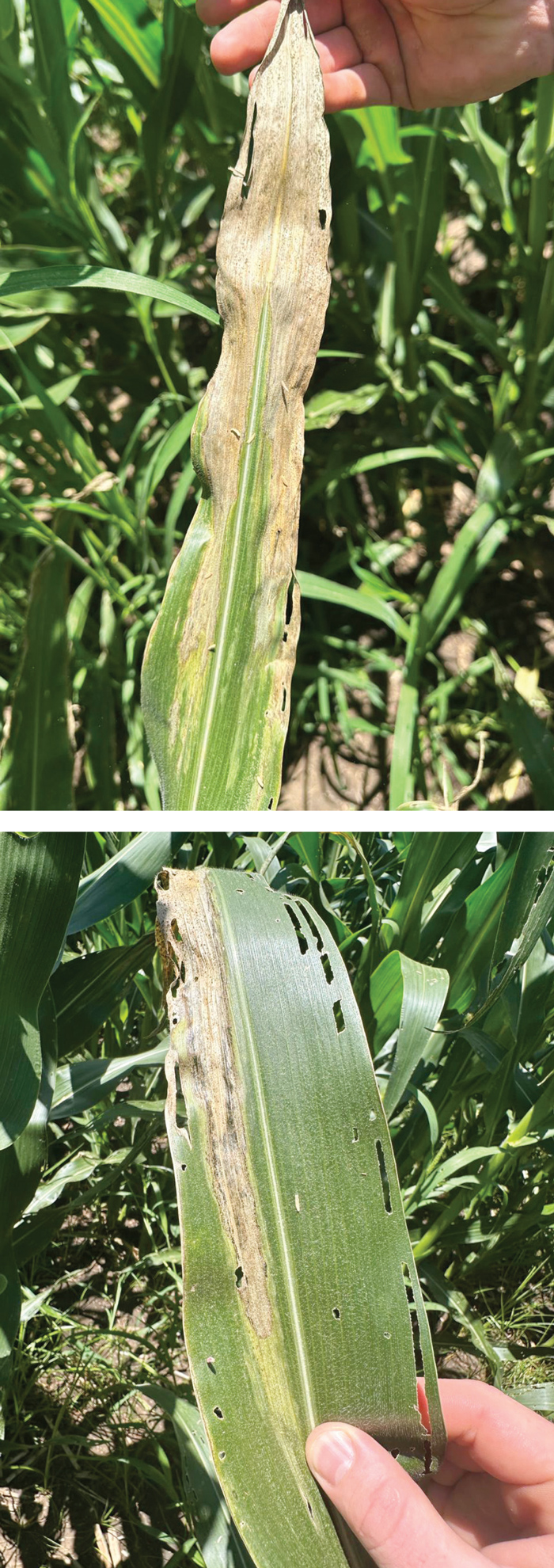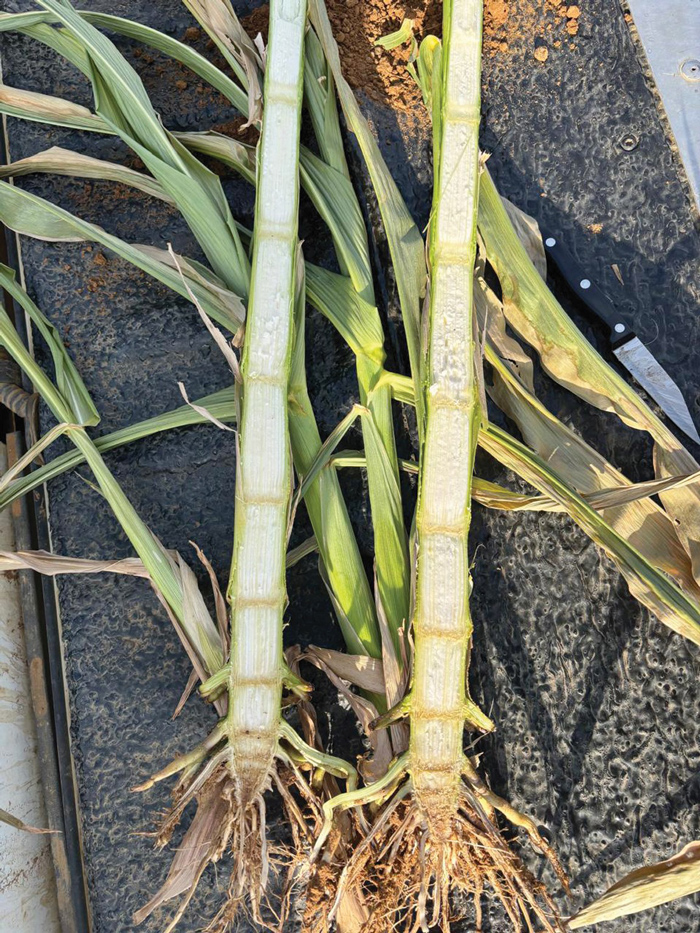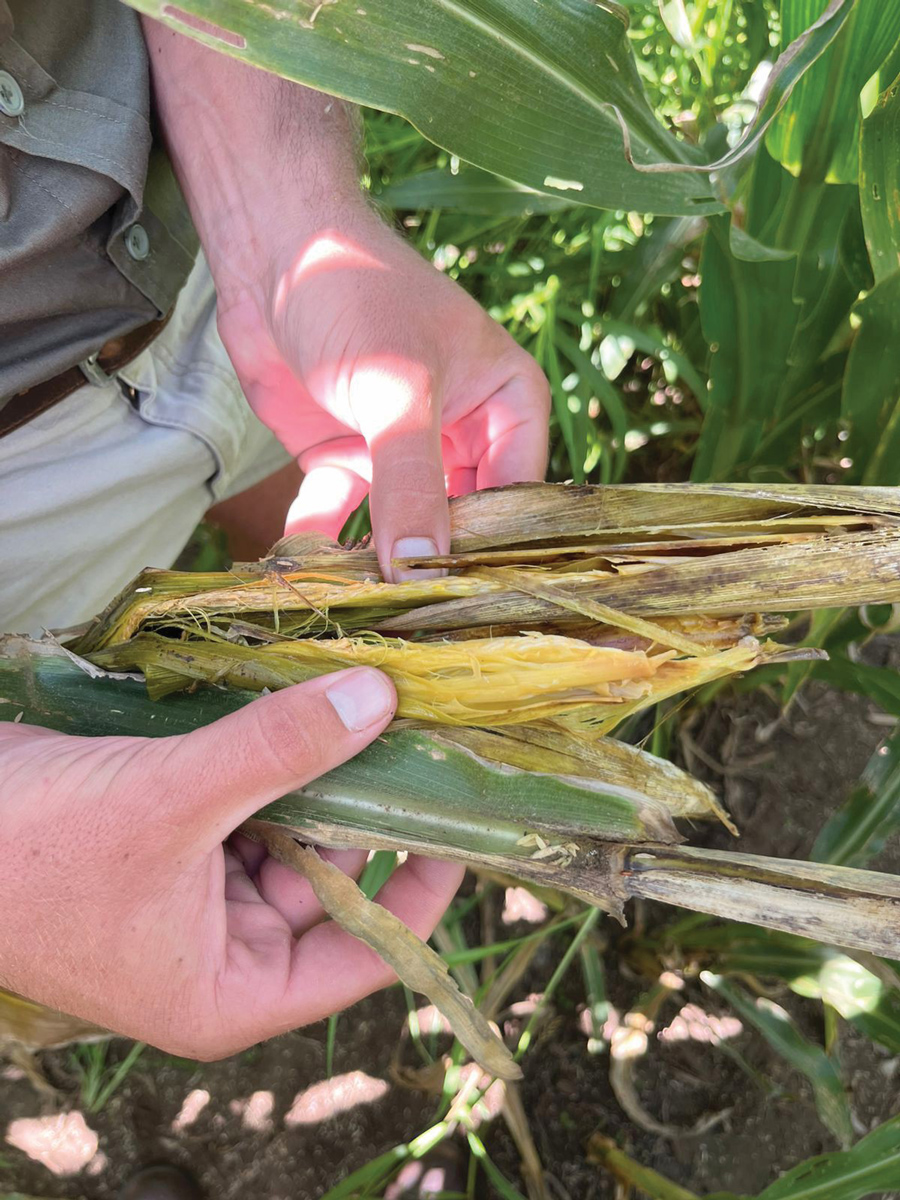April 2025
| DR GODFREY KGATLE, GRAIN SA RESEARCH COORDINATOR |  |
GOSS’S WILT IS AN EMERGING CHALLENGE FOR SOUTH AFRICAN MAIZE FARMERS, CAUSED BY THE BACTERIUM CLAVIBACTER MICHIGANENSIS SUBSP. NEBRASKENSIS. IT PRIMARILY AFFECTS MAIZE AND CERTAIN GRASSES, INCLUDING SORGHUM, FOXTAIL SPECIES AND RELATED CROPS. IT IS NOT KNOWN TO INFECT VEGETABLES, AS ITS HOST RANGE IS SPECIFIC TO CEREAL AND GRASS SPECIES.
This plant pathogen leads to severe leaf blighting, systemic infection and stunting, ultimately reducing crop yields. The disease spreads through infected crop residue, wind-driven rain, irrigation and contaminated equipment, entering plants through wounds from hail, pests or mechanical damage.
The 2023/2024 growing season showed an increase in reports of unusual symptoms in maize fields, prompting scientific investigations. Given its potential impact on the yield and trade, the Department of Agriculture (DoA) convened a Disease Steering Committee (SteerCo) to assess and develop strategies for containment and management.

A non-infected stalk.
THE ROLE OF THE STEERCO
The Disease Steering Committee (SteerCo), led by experts from the DoA, Grain SA, SANSOR, seed companies and the research community, was established to assess and manage Goss’s wilt in South Africa. Key outcomes include:

Examples showing the presence of Goss’s wilt.
MORE ABOUT THE DISEASE
This article explores the key outcomes of the SteerCo discussions, the risks associated with Goss’s wilt and management practices that farmers can implement to mitigate its effects.
Symptoms
Symptoms include irregular, water-soaked lesions on leaves that turn yellow, tan, or brown with dark borders. It can also cause malformed ears and tassels. Cutting the stalk reveals internal brown or reddish streaks in the vascular tissue, and bacterial slimy and smelly exudate may ooze from the cut, especially under pressure.
The disease thrives in hot, humid conditions and spreads through plant stress or physical damage. A stem that is not infected appears healthy, firm, and free of discoloration, lesions, or abnormal growths. Wilting symptoms may result from drought or other causes. Therefore, producers are encouraged to submit suspected samples for testing to Grain SA.
How it spreads
The pathogen spreads through planting infected seeds (although at a minuscule level of 0,05%), crop residues, soil and secondary host plants. Wind-driven rain, irrigation and contaminated equipment further facilitate transmission. It enters plants through wounds caused by hail, pests or mechanical damage. Although seeds have a low probability of transmission, they can still introduce the disease into new areas.
The 2023/2024 summer crop season was exceptionally hot and dry, leading farmers to report unknown symptoms in their maize fields. Samples submitted to the ARC-Grain Crops, FABI (UP) and Stellenbosch University confirmed that Goss’s wilt was present in South Africa, with official samples testing positive.
The disease has been isolated in four provinces: The Free State, North-West, Mpumalanga and Limpopo.

Photos: Grain SA
Infected crops
Crops infected with Goss’s wilt used for grain or feed do not directly threaten human or animal health, as the pathogen only affects plants. It is important to note that grain is not a pathway for transmission. While seeds play a role in disease transmission because they propagate plants, grain is harvested for consumption and cannot function as seed, making it irrelevant as a transmission pathway.
Concerns
The presence of Goss’s wilt has raised concerns among farming communities and trading partners. Botswana and Namibia have imposed trade restrictions on South African maize. This prompted the DoA to draft an official response, which, by using the scientific understanding of the disease in its defence, could get Botswana and Namibia to lift the ban within a week. Additionally, a scientific paper is being prepared to enhance awareness and management strategies locally.
MANAGEMENT PRACTICES
Since prevention is crucial, ARC-Grain Crops is developing a Goss’s wilt management strategy. Recommended practices include:
Farmers noticing unfamiliar symptoms should contact Grain SA to connect with diagnostic clinics. These clinics can provide accurate disease identification and further guidance on management practices.
CONCLUSION
By following these strategies and staying informed through SteerCo initiatives, South African maize farmers can mitigate the impact of Goss’s wilt and ensure sustainable farming practices for the future.
Contact Dr Godfrey Kgatle (Grain SA research coordinator) on 079 489 5966 or godfrey@grainsa.co.za for more information.
Publication: April 2025
Section: Pula/Imvula